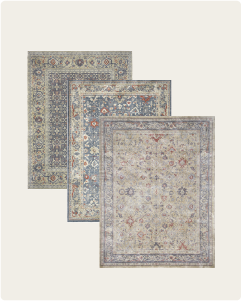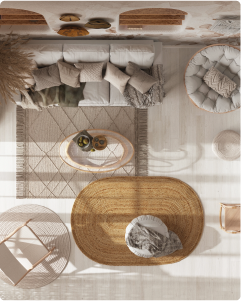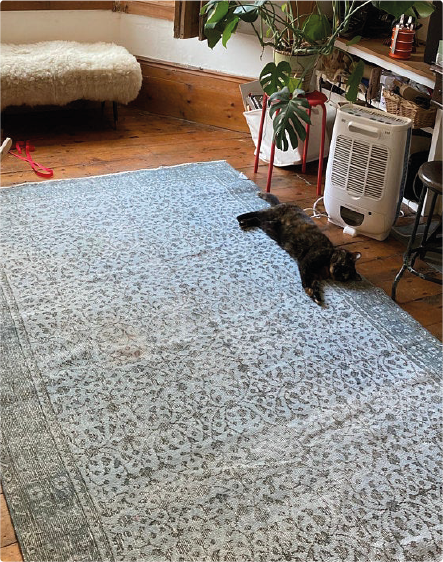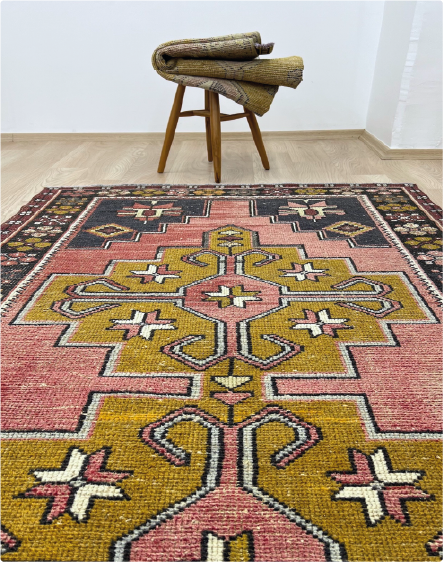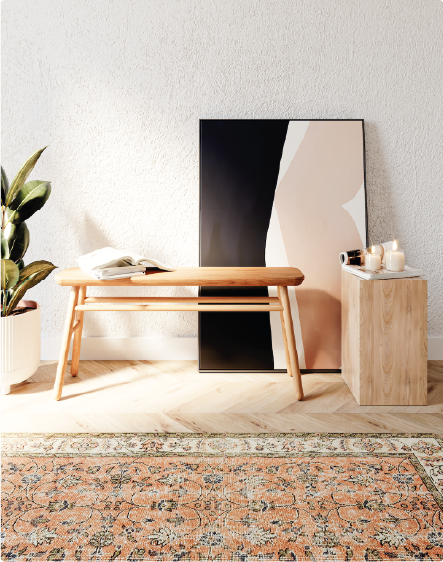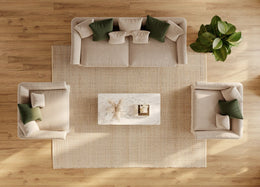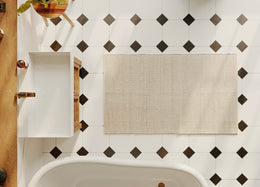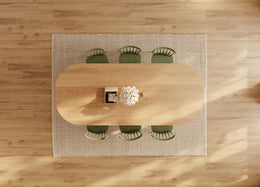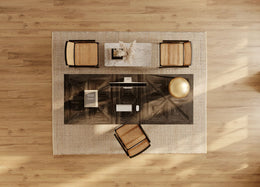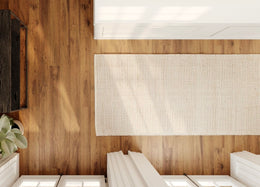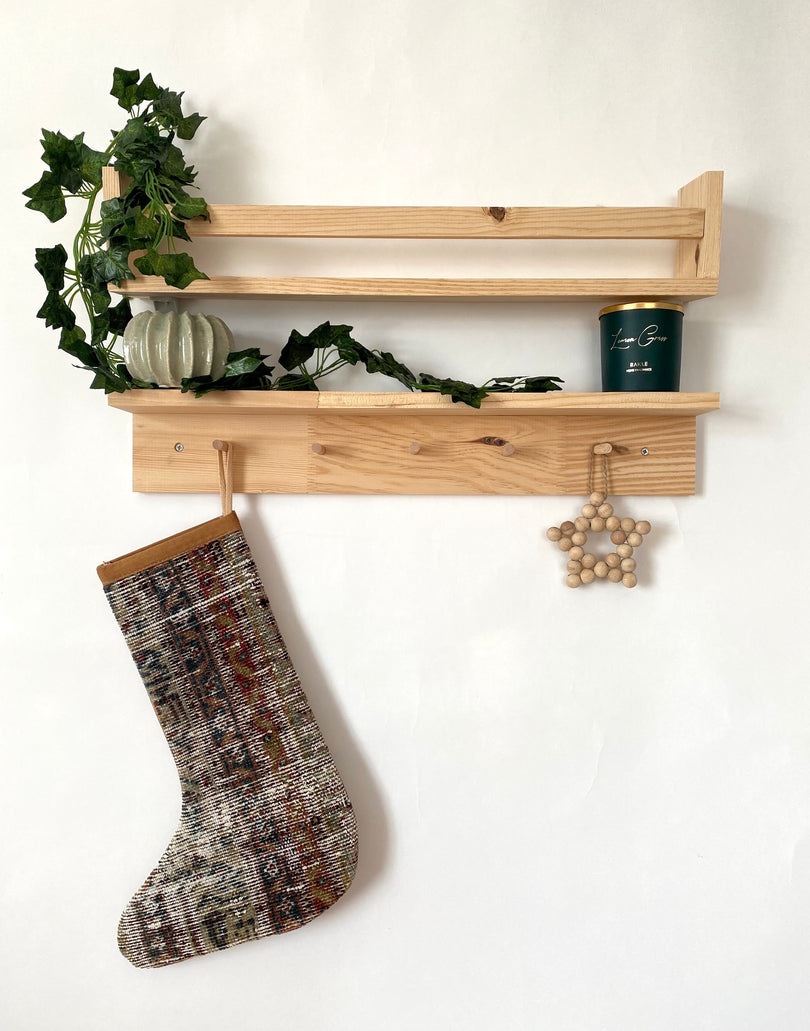For one thousand years, Oriental rugs and carpets have been the medium to transport us from one land to another, from one century to the next and from one culture to another. They have been bringing about social change and cultural influence throughout their rich history - a unique weave in the world that inspires us with their beauty. These heirlooms are arguably some of the most valuable family possessions we can cherish throughout our lives, since each rug is unique and tells a story about its own. Each line, every symbol and every shape is carefully worked on by highly skilled artisans from the olden days - humans with passion, love and knowledge of intricate designs!
Oriental Rugs Have A Rich Past
The history of Oriental carpets is a long and storied one. The first recorded mention of carpets was in the 5th century B.C., when a Greek historian named Herodotus described seeing them in Persia. In fact, the word "carpet" comes from the Persian word "karpet," which means "firmly woven fabric."

In the 13th century, Europeans began importing carpets from Persia, where they were woven by nomadic tribes along the Silk Road. By the 14th century, these imported carpets had become so popular that many European countries established their own carpet-weaving industries.
In the 16th century, Europeans began traveling to Turkey and Iran to buy handmade Oriental carpets directly from local weavers. These early travelers brought back stories about ornate designs and intricate knotting techniques that were unlike anything seen before in Europe—and thus began a centuries-long fascination with these beautiful works of art.
In the 17th century, Persian masters began weaving beautiful pieces using silk and wool. These carpets were woven on large looms, which could produce wide swaths of fabric at once. They were used as living room flooring or as prayer mats for mosques and temples, where they were considered to be sacred objects.

The 19th century saw an explosion of interest in Oriental rugs as more people traveled overseas and brought home souvenirs like these colorful pieces of art for their own homes or businesses.
In the 20th century, oriental rugs continued to be popular as they were before. They were used to make up entire rooms, as wall hangings or table covers. They were also made into smaller pieces like pillows and handbags.
What makes a good Oriental rug?
In general, the answer is: everything. But there are some details that are more important than others when it comes to quality and value.
First, let's talk about materials. The best Oriental rugs are made from high-quality wool, whether it's Indian Soumak Wool or hand-spun wool. This means that they're durable and can stand up well to wear and tear over time, even if they're used on a daily basis.

Next is the knot count: how many knots per inch (kpi) does the rug have? The higher the number of knots per inch, the more tightly woven it will be—and the longer it will last. Some rugs have as many as 500 knots per inch! That means you can feel confident that your new rug won't fall apart after just a few months in your home.
Last but not least: quality control. If you want to ensure that your Oriental rug is going to last for years without fraying at the edges or fading out over time, look for a brand with good standards for quality control and assurance processes in place so that every piece meets their high standards before being sold online or in stores nationwide.
What are Oriental rugs called now?
Oriental rugs are one of the most popular types of rugs on the market today, but their name can be confusing. They are sometimes referred to as "Turkish" or "Persian"
Oriental rugs are actually called "oriental" because they were made in and exported from countries located in the eastern part of Asia. The countries that produce Oriental rugs include China, India, Pakistan, Iran, Turkey and Afghanistan.

Different Types of Oriental Carpets
Oriental carpets are known for their intricate patterns and bold colors. They have been produced in the Middle East and the Indian subcontinent for centuries. Their exact origins are unknown, but they are thought to be a combination of Persian, Turkish, Chinese and Indian influences.
The most common types of Oriental carpets are:
Persian carpets - these were made in Iran during the Safavid period. They are known for their floral designs and intricate patterns.
Indian carpets - these were made in India during the Mughal period. They are known for their floral designs and geometric patterns.
Turkish carpets- these were made in Turkey during the Ottoman Empire era. They are known for their geometric designs and bold colors.
Oriental Carpeting is an important part of global culture because it represents a unique blend of history, artistry and craftsmanship that has influenced many different cultures around the world including America where we have seen a revival of interest in this magnificent art form through decoration of rooms from homes to offices with carpeting woven from silk wool or synthetic fibers as well as rugs made from natural fibers such as cotton linen jute wool etc...
The Truth Behind Oriental Rugs
Oriental rugs come in many different forms and types, but they all share one thing in common: a rich history of weaving that has been passed down through generations.
As with any art form, there are several elements to consider when determining whether a rug is worth the price tag. The most important are the materials used to make it and how well those materials were woven together.

First, let's talk about what makes a good oriental rug: wool! Wool is the most widely used type of material for oriental rugs because it's durable, soft and easy to clean. It also has natural fire-resistant properties that make it safer than other materials like cotton or synthetic fibers.
The next thing to look at when evaluating an oriental rug is its knot count—that's how many individual knots were used to create each knot in your rug. The higher the knot count number on your label means that more time went into creating your rug—and more time means more labor costs!
Difference between Oriental and Persian rugs
There are many different types of Oriental carpets and rugs, but the most common type is Persian. Persian carpets have been around for centuries, and they have been made by expert weavers in Iran and other countries in Asia. Today, people all over the world are fascinated by these gorgeous works of art.
Persian carpets are also known as oriental carpets because they're woven by artisans who live in countries such as Turkey, Afghanistan, and India. But while all Persian carpets are Oriental carpets, not all Orientals are Persian!
Oriental carpets come in a variety of styles and colors—some are bright and bold, while others are more understated. They can be made from different materials like wool or silk. Some patterns include floral designs or geometric shapes; others feature bold stripes or all-over patterns. Any way you look at it, an Oriental carpet is sure to make any room feel cozy and welcoming!

Patterns of Oriental rugs
Oriental rugs come in a variety of patterns, but there are some commonalities among them.
The most common pattern type is floral. Floral patterns are used on most Oriental rugs and can be seen in a variety of different forms: from intricate to bold and geometric to traditional. Floral patterns can be found in medallions, all-over designs, or simply as part of the overall pattern design.
Other popular patterns include geometric and bold designs such as squares, diamonds, and octagons. Geometric designs are often used for borders or central medallions as well as for other parts of the overall design. Bold designs can also be found throughout an Oriental rug's pattern or as part of a central medallion design.
Ornamental motifs such as animals and birds are also popular in Oriental rugs' patterns. Some animal motifs include camels, elephants, lions, tigers, horses and peacocks while bird motifs include peacocks, egrets, parrots and ostriches.
Central medallions are another common pattern element found on Oriental rugs. They typically take up one third of the total area of an Oriental rug's center field (the middle section between borders).

All in all, Oriental rugs are works of art that have been passed down through generations, and each one is unique. Their beauty and craftsmanship make them a great addition to any room or home—and they can last for many years if cared for properly!
The Oriental carpets are a must-have for your home. They are available in various colors, patterns and sizes. They can make your house look beautiful and classy. The carpets come with bold patterns, rich colors and vibrant colors that help to add more color to your home decor. The natural materials used in these carpets make them look elegant and classy.
The oriental carpets are hand-knotted rugs that are made from high-quality materials with a wide variety of colors. These rugs have an average person in mind who wants to decorate their house with beautiful pieces of art rather than just putting up furniture or other items that can be found anywhere else. The center medallion is a key feature of an oriental rug which adds an antique touch to it making it look like an art piece rather than just a piece of carpet on the floor. The country of origin and ancient times when these rugs were made makes them even more precious as they have been passed down through generations making them highly valuable pieces of art as well as being functional items in any home decor scheme

Oriental rugs have been around for centuries. They are beautiful, durable, and come in a wide range of colors and patterns. You can find the perfect Oriental rug for your home at Kuden Rugs. We have a wide selection of traditional patterns, including all-over patterns and design patterns that will accent any room in your home.
You can also choose from a variety of countries of origin, including Iran, Turkey, India and more! So you can be sure that your rug will look great for years to come.

